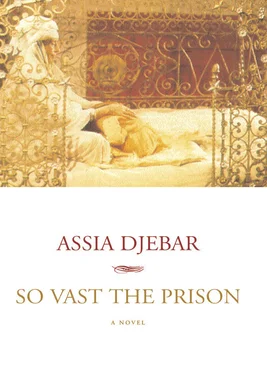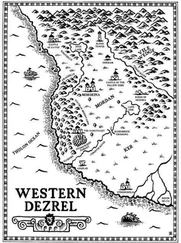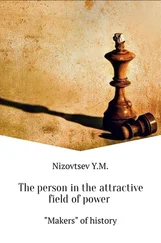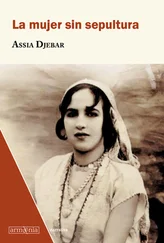Tin Hinan — as the two archeologists verify by studying her skeleton — wears seven silver and seven gold bracelets on her left wrist and a single silver bracelet on her right; a string of antimony beads circles her right ankle. Precious and exquisite pearls cover her breast .
Near her, dates and fruits had been placed in baskets; nothing remains of them but pits and seeds. Facing the recumbent body there is a stylized statuette of a woman (her portrait?) that has not completely vanished, as well as some pottery, fragments of which remain .
A gold coin stamped with the likeness of the Emperor Constantine is still there; in a nearby room a Roman lamp from the third century is preserved. So, despite the distance of centuries, the chronological date of the tomb can be fixed .
But there is something especially troubling to my stubborn dream in its attempts to reassemble the ashes of time, to hold on to the traces around these miraculously preserved tombs. Especially troubling (even though I am just as disturbed by Tin Hinan’s removal to Algiers) are the tifinagh inscriptions found here. They are very ancient in origin and they can also be found on the walls of the neighboring chambers (the chouchatts ), where each of the princess’s friends was buried in turn .
Libyan writings. Earlier even than the writing at Dougga, they are in Libyan script, no longer understood by the Tuaregs, who respectfully followed the archeologists into the tomb, then averted their gaze when faced with the recumbent Tin Hinan .
And so I imagine the princess of the Hoggar who, when she fled in the past, carried with her the archaic alphabet, then confided the characters to her friends just before she died .
Thus, more than four centuries after the resistance and dramatic defeat of Yougourtha in the north, also four centuries before the grandiose defeat of la Kahina — the Berber queen who will resist the Arab conquest — Tin Hinan of the sands, almost obliterated, leaves us an inheritance — and does so despite her bones that, alas, have now been disturbed. Our most secret writing, as ancient as Etruscan or the writing of the runes, but unlike these a writing still noisy with the sounds and breath of today, is indeed the legacy of a woman in the deepest desert .
Tin Hinan buried in the belly of Africa!
PART THREE. A SILENT DESIRE
“Confession is nothing,
knowledge is everything.”
— HERMANN BROCH, Hoffmansthäl et son temps
“Fugitive Without Knowing It”
There are four of them, and when the message hanging from the end of a reed comes out through the closed window, it is only intended for the fourth man …
The four are captives and probably a sorry sight — all except this fourth man receiving the missive in Arabic (a language that is a mystery to him) that comes with a tidy sum of gold. This writing in the native language, translated for him by a renegade who is in on the secret, comes from a mysterious woman of noble birth, the beloved only daughter of her wealthy father .
That is the story of the Captive and Zoraidé from Don Quixote . I imagine (and why not?) that this entrance of the Algerian woman into the first great novel of modern times actually took place in Algiers between 1575 and 1579. Somewhere beneath a blind window this note of alarm was sent by a woman who was perhaps not necessarily the most beautiful nor the wealthiest nor the sole heir of her father, no, but certainly she was a woman who was locked away .
Because she has been secretly spying on the wretched world of the convicts doing their hard labor in prison but out of doors, the unknown woman boldly dares to initiate the dialogue from her enclosed and gilded prison .
The dialogue with the other: not particularly because he is this other, not at all, but because she is able to discern the true nobility and worthiness (that of the hero of Lepanto) beneath the tatters indicating this man’s temporary loss of place in the world. A voyeur, with her lynx-like gaze, like a madwoman, relishing the danger, she offers herself as the liberator of the person who will venture with her to make the ultimate transgression. Even as she plots the course, does she have any premonition that, at the end of the journey, she will find herself the wife of this Christian or perhaps some other, but that above all she will find herself a foreigner, a stranger in the language of Cervantes?
Of course, right from the start the fugitive woman will recognize the images of Marie-Mériem in the church. However, in return for making this eventful trip with a whole group of people among whom she shines like a jewel, in the end she will see herself reduced to the role of stunningly beautiful deaf-mute — but then she will write no more .
Freeing the slave-hero from the dungeons of Algiers, she sets herself free from the father who has given her everything except freedom, leaving him behind on the shores of Africa, and he will curse her for her betrayal. She exchanges her gilded cage (the richest house in Algiers, where she was queen) for an elsewhere that is boundless but uncertain .
Her writing is erased. No one can read it, so now it is useless. She is indeed the first Algerian woman to write — Zoraidé who meets, if not with Don Miguel, then at least with Don Quixote’s captive. The writing of a fugitive: a writing whose very essence is ephemeral. And the Knight of the Sad Countenance will be her first witness in the Christian world, while the language buzzing or written all around her will, for the present, allow her only a silent gaze. Which is, consequently, the end of the initial dialogue, if not of the dazzled, then of the dazzling, presence of the traveler .
All up and down the Mediterranean this is the way the first exchange takes place: a portentous intermingling of the sexes — first of languages, then gazes, before the bodies collapse into each other. An ambiguous transmutation of roles: the woman free and the man a slave, the first image of the couple in this shift in worlds, that will — after numerous fluctuations, including a twofold and simultaneous servitude — result in a different equilibrium. The couple will be composed of the strange, foreign, Moorish woman — a Christian wife who is neither free nor a slave — and the soldier freed from his chains, but not at all from wretchedness and uncertainty …
From the start the dominant theme of this loosely connected tale concerns a woman writing in Arabic, writing that on several occasions takes on weight by the addition of a gift of gold. The woman who writes is the one who pays, but she is also the thief and traitor in the eyes of her father and her family. She is the woman who, in the country garden in the Sahel of Algiers, dreams up the plot and sets it in motion, then, in the middle of the night, collapses in the arms of the stranger, and yet persists in her wish to run away. The journey she began wearing a gown studded with diamonds will end with her in the clothes of a pauper; her face veiled as it had been at home, she will make her way riding on the back of a donkey: and so exoticism creates a backwash .
Zoraidé’s story, told, with her present but silent, by the former captive to the guests at a country inn where Don Quixote and Sancho Panza are staying, is indeed the metaphor for Algerian women writing today — among them myself .
My family’s city, the former Caesarea, was repopulated by hundreds of Moriscos, the people who were expelled en masse in Cervantes’s time, in a final and profound bloodletting inflicted by Spain on itself at the beginning of the seventeenth century. They found refuge in the cities of the northern Maghreb, one of which was my very ancient little city, the romanized ex-capital .
Читать дальше












